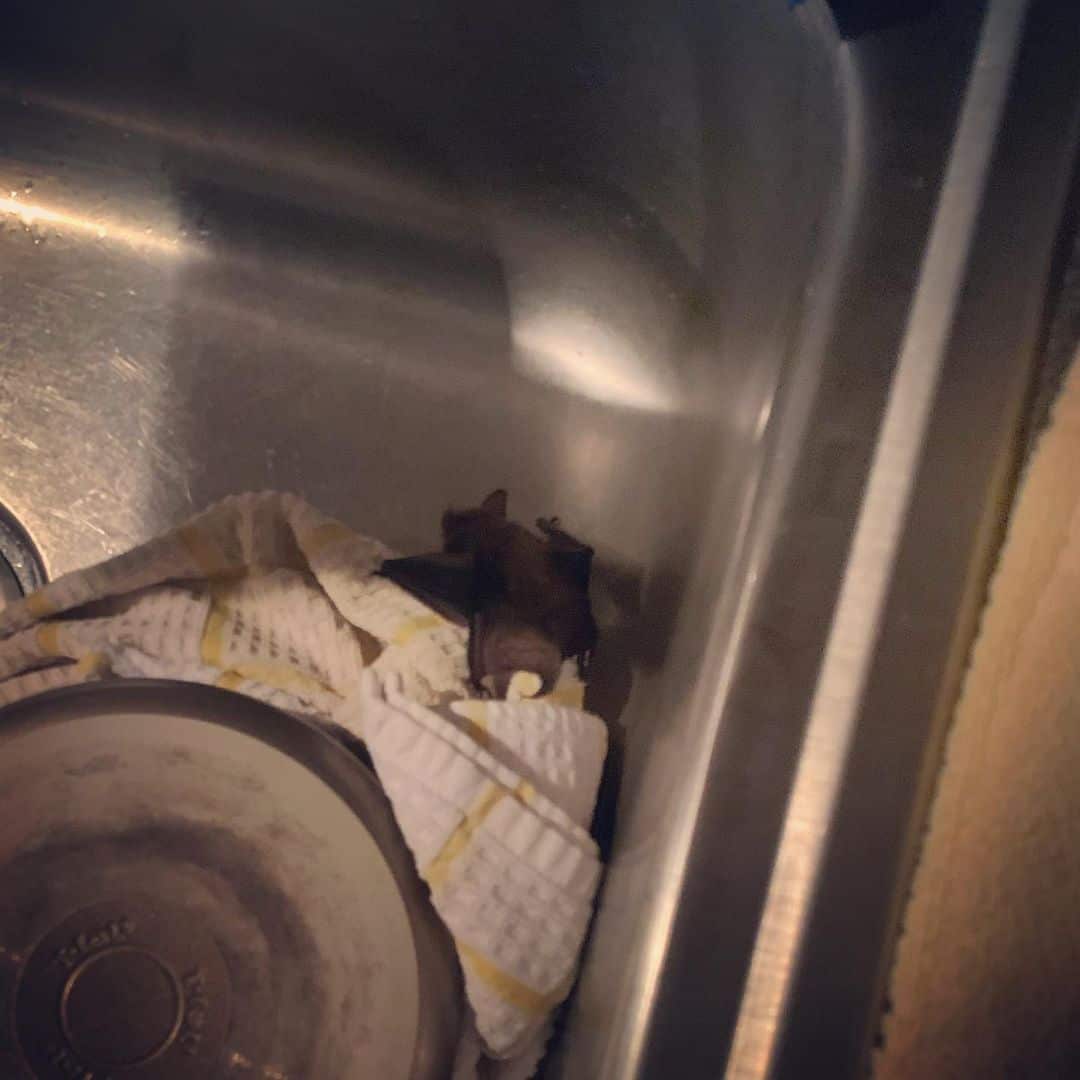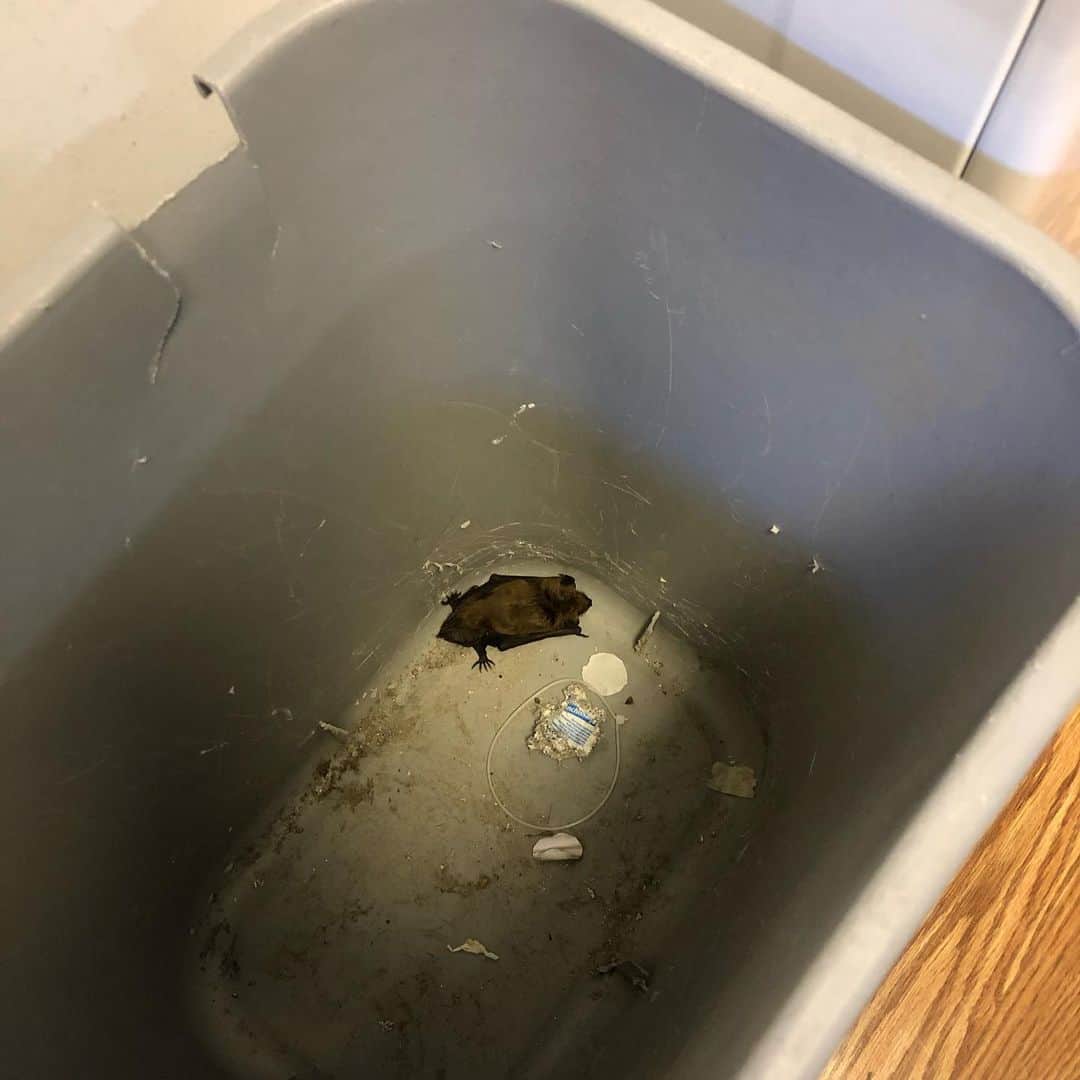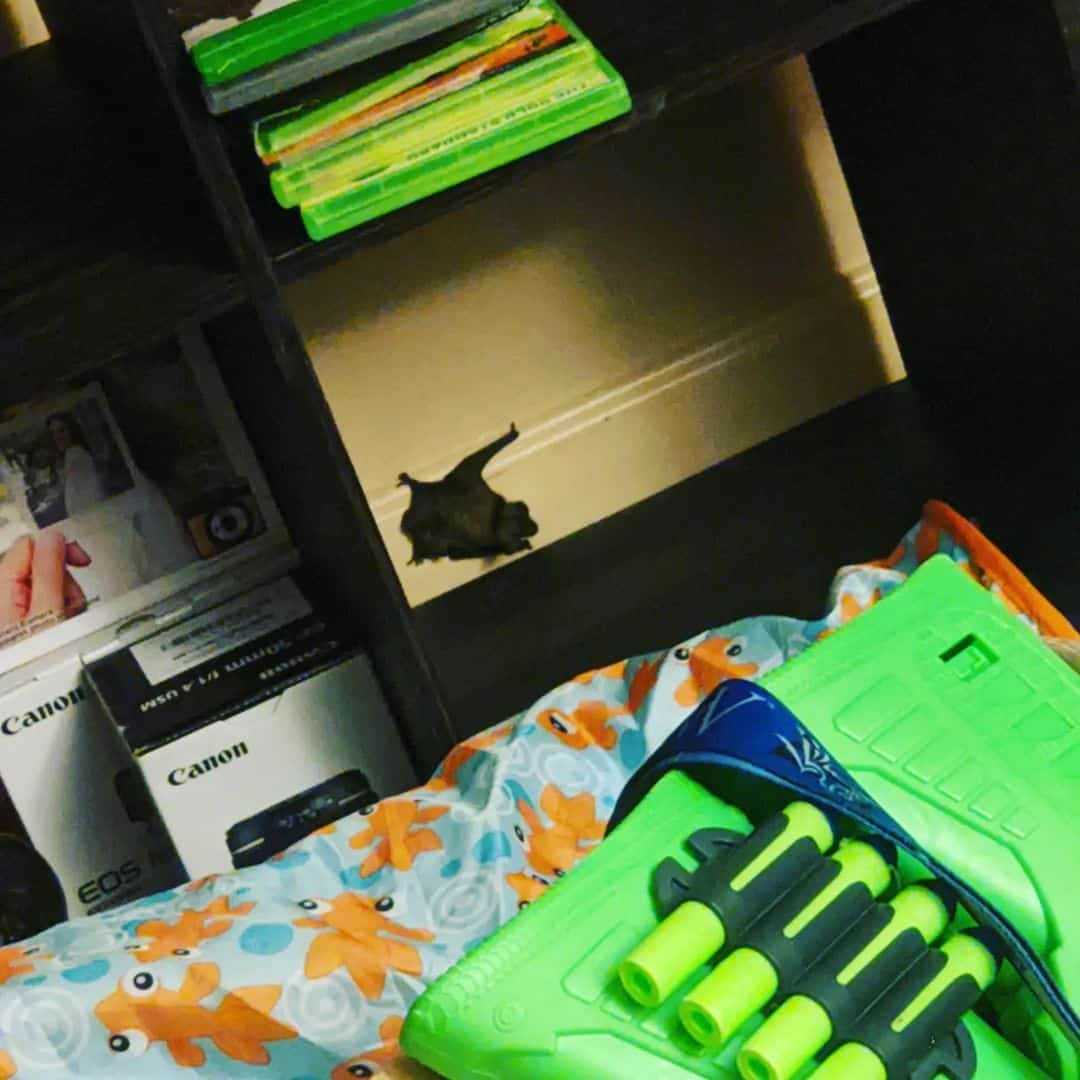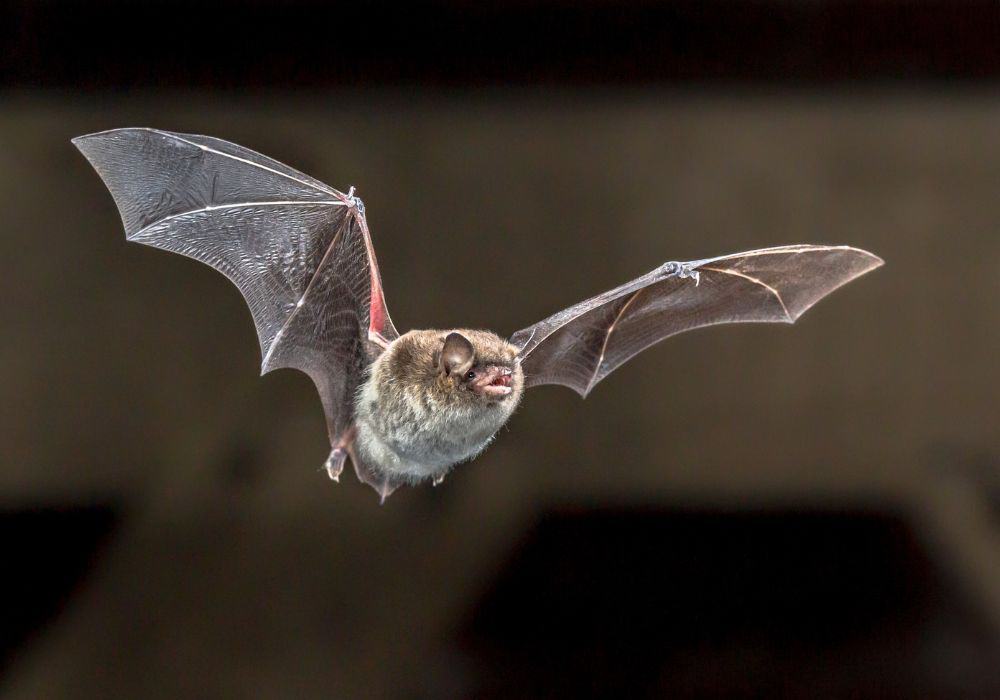Has this ever happened to you?
You are resting on your couch at night watching a Netflix show. Or you’re settling into bed, ready to sleep.
And out of nowhere, you hear a fluttering sound, followed by a rustle of wings. You switch on the light only to find a bat flying inside your sitting room or bedroom.
Bat encounters are not unusual. Sometimes, these night creatures might stray off course and find their way into your home. But this is no cause for alarm. Instead of panicking, stay calm and find an effective way to remove it.
In light of this statement, we have curated this comprehensive guide to help you deal with bats in your home safely and humanely.
Understanding Bats
Before diving into effective tips for bat removal, let’s first understand these remarkable creatures. It’s no secret! Bats usually get a bad rep that is largely underserved.
Contrary to belief, bats are not some spooky vampires that will suck your blood. Instead, they are valuable members of our ecosystem.
Most species of bats often found in human dwellings like the big brown bat feed entirely on insects, such as mosquitoes, moths, and beetles. As a result, they play a vital function in keeping the insect population in check.
Some bat species also help to pollinate plants, particularly in tropical regions. These animals will move from one flower to another, searching for nectar while pollinating the plants.
Others, like tropical fruit bats, consume ripe fruit and excrete seeds far from the original plants. Hence, they have a vital role in seed dispersal and promoting the growth and regrowth of trees.
One common stereotype is that bats cause rabies.
While this is not far from the truth, less than one percent of all bat species have this disease. What’s even surprising, these creatures can only get rabies if they come into contact with rabid organisms.
So why do bats have a target on their back?
It’s because they are the primary reservoir for high-profile and deadly pathogens that can affect humans, like Ebola, Marburg, and Rabies.
But this is also true for other animals, such as cats and dogs. In fact, studies show that 75% of diseases in the last three decades originate from animals, among them bats. However, they are far from the only animals.
Why Do Bats Enter Houses?

Image Credit: _rachael.sackmann_
Bats usually dwell in hollow cavities of dying or dead trees and caves. But due to human encroachment into their natural habitats, safe spaces have become limited.
As a result, bats have adapted to manmade structures, like chimneys, attics, or basements. They can make their way into these areas through common entry points, including:
- Gaps and holes in the exterior of your home
- Loose vent
- Uncapped chimney
- Open windows and doors
Even if you don’t have a bat colony in your house, these animals might fly into your living room, searching for food, shelter, and warmth.
Sometimes, young bats (pups) learning how to fly might accidentally enter your home through an open, unscreened door or window. And since bats are not good at figuring out their way, they are likely to land on your furniture or curtains and take to the air again.
But remember, bats are typically more afraid of humans than we are of them. If a bat finds himself in your living room, he doesn’t want to be there any more than you want him to be there. Therefore, it’s vital to handle the presence of the bat with care to ensure everyone’s safety.
What to Do If a Bat Enters Your House?
If a bat finds its way to your living room or bedroom, it’s crucial to find a safe way to remove it. Unlike other wild animals, bats are not aggressive and often avoid human contact. However, it’s crucial to exercise the safety of both parties through the following steps:
1. Stay Calm
During a bat encounter indoors, it’s essential to stay calm. If you panic and start jumping around, you might agitate the adult or young bat further.
The best thing to do is to remain composed and reassure yourself that you got the situation under control. Next, keep kids and pets, like dogs and cats away.
Another thing is to respect the bat’s personal space. Avoid direct contact or trying to catch the animal because it might scratch or bite you. If this happens, it might expose you to dangerous viruses or bacteria.
2. Close off the Area
If the bat flies only in one room, close all the interior doors leading to other rooms in the house. This way, you can prevent the bat from entering different areas of the house and hiding.
Turn off the lights and ceiling fans as they affect the bat’s ability to navigate. The lights can disorient the animal, causing it to fly erratically or become confused.
Next, open the windows, and remove screens and exterior doors to provide the bat an exit route. Be patient, since the creature might need some time to find its way out.
Furthermore, avoid chasing the bat or making noises, as these might stress or disorient it and prevent it from finding the exit.
How To Capture the Bat?

Image Credit: nwcinc
If the flying creature does not exist, you need to catch and remove it yourself. But first, let it settle down before capturing it.
Also, don’t handle the bat barehanded. Get some thick work gloves that the animal cannot bite through.
If you don’t have gloves, find a thick material that can withstand bat bites and scratches (not a towel, though, or anything made of cotton). Think of covering your arms and legs with long clothing, too.
The best way to capture the bat is to use a plastic container (like a bucket), jar, or net. Gently place the bucket or net over the bat. Then, slide a piece of cardboard (with small holes) under the container and flip it.
Once the bat is trapped, wait for the right time to release the animal. Bats are usually active at dusk or dawn. Therefore, wait till nightfall or early morning and find an elevated surface to place the container. Tip it on its side to let the animal go.
It’s also wise to release the bat in an area with vegetation and free from immediate dangers, like heavy human activity or predators.
But what if you’re not comfortable handling the bat problem? We recommend you contact your local animal control agency for assistance.
If you want to learn more about bat removal, check out this comprehensive step-by-step guide by Bat Conservation International.
When Should You Not Release a Bat?
Do not release the bat under the following conditions:
- It was in the same room as someone sleeping
- Case of direct contact with an individual in the house
- The bat was in the same room with children or pets
In these cases, contact your area wildlife rehabilitation center or veterinary to test the bats for rabies
As for bat exposure (bites or scratches), wash the wound with soap and water. You also want to visit your local health department or disease control agency for rabies testing and treatment of your wound.
What To Do After Bat Removal?

Image Credit: tiredartkid
This section highlights a few things you should do after bat removal, including:
1. Inspecting Your House for a Bat Colony
After removing the animal, it’s a good idea to inspect your house for a colony of bats.
As mentioned earlier, bats can establish homes in dark spaces like attics, chimneys, and soffits. Maybe the bat in your house lost its way to the colony and landed in your living room.
Common signs of bat colony or infestation include:
- Lots of flapping, rustling, and chirping sounds, especially near potential entry points
- Presence of bat guano (droppings) on Walls or windowsills
- Sightings of flying creatures at dusk and down
- Strong ammonia scent
If you observe these signs, call a bat removal company to determine the bat population and remove the creatures. The company will also suggest the best exclusion measures.
2. Prevent Future Bat Intrusions
To avoid future bat infestation, follow the preventive measures below:
- Block entry points
Locate cracks, gaps, and openings that these creatures can use as their entrance to your house. Before sealing these entry locations, install a one-way-excluder to allow the bats to exit but not re-enter the house. After a week, fill the open spaces with caulk, wire netting, or other materials.
- Install bat boxes
You can also install bat houses or boxes in your yard or nearby trees. These artificial shelters will offer the bats an alternative habitat and a place to roost. This way, you can keep them away from your home.
- Trim trees and vegetation
If your home is close to dense vegetation and overgrown trees, trim them to keep bats away.
- Maintain outdoor lighting
Insects love outdoor lighting. As a result, they can attract bats that eat them. To keep the insects away, replace your outdoor lighting with amber bug lights to reduce the presence of bats near your house.
- Consult professionals
Another way to prevent bat infestation is to talk with bat conservation or wildlife professionals. These experts can offer your valuable guidance on friendly practices to handle bat removal and bat-proofing your home.
Final Thoughts
Finally, you have made it to the end of our guide. We hope you have gained valuable knowledge to handle bat problems in your home safely.
Remember, bats are vital members of our ecosystem and require our protection. By following the measures above to deal with bat presence, homeowners can learn to co-exist harmoniously with bats.
However, it’s crucial to recognize existing laws and regulations on bat removal in your area before taking any action. It also helps to consult your local wildlife authorities to ensure compliance with legal considerations.
That’s all for today! If you have any questions, hit us below.
